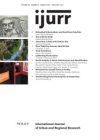To what extent are we experiencing a transformation from ‘spaces of place’ to a ‘space of flows’ as proposed by Manuel Castells? Applying his thesis to the political system leads to the following implications. Socio‐economic processes of ‘glocalization’ are undermining the gate‐keeper position of national governments. Furthermore, governance is becoming ‘deterritorialized’, an aspect which is characterized by Elkins as an ‘unbundling’ of identities and jurisdictions. But does this process of unbundling lead to a federal system of multi‐level governance where the national level is complemented by supranational and subnational levels of governance; or does it imply an even more radical transformation towards an architecture of governance which is characterized by a proliferation of single‐purpose governments with variable and flexible spatial scales? A final implication is the transformation from ‘government to governance’— which means a broader array of actors and changing modes of interaction. This article traces these theses by analysing institutions of governance in four cross‐border regions in Europe and North America. In all regions we indeed find many cross‐border networks and institutions undermining the national gate‐keeper position. In Europe, cross‐border collaboration is producing another soft, but institutionalized, comprehensive, stable and territorially‐defined layer in the European ‘multi‐level‐system’. In North America, by contrast, only informal, fluid, specific and non‐territorial institutions are evolving across national borders. Here, the territorially‐based nation state is not complemented by similar kinds of political institutions, but is instead being challenged more fundamentally by new kinds of institutions: transnational socio‐economic exchange networks and transnational ideological coalitions which embody enormous transformational power. In conclusion, cross‐border regional governance in Europe still follows the logic of ‘spaces of place’, whereas in North America quite different ‘spaces of flows’ are emerging as complementary logics of community and institution building. Jusqu’où s’exerce la transformation d’un ‘espace de lieux’ en ‘espace des flux’, comme le suggère Manuel Castells? L’application de cette théorie au système politique a plusieurs implications. Les processus socio‐économiques de ‘glocalisation’ désagrègent la position de garde‐barrière des gouvernements nationaux. De plus, la gouvernance se ‘déterritorialise’, phénomène qu’Elkins appelle la ‘séparation’ des identités et des domaines de compétence. Mais à quel type de gouvernance cette ‘séparation’ mène‐t‐elle: à un système fédéral à plusieurs niveaux où le plan national est complété de plans supra‐ et infra‐nationaux de gouvernance? ou à un changement plus radical vers une architecture caractérisée par une prolifération de gouvernements à finalité unique dont les échelles spatiales varient et s’adaptent? Une dernière conséquence est le passage de gouvernement à gouvernance, qui se traduit par une diversification des acteurs et de nouveaux modes d’interactions. L’article retrouve ces thèses en analysant des institutions de gouvernance dans quatre régions transfrontalières européennes et nord‐américaines. Dans toutes les régions, l’étude identifie en effet de nombreux réseaux et institutions transfrontaliers qui minent la position de garde‐barrière nationale. En Europe, la collaboration transfrontalière crée une strate souple, quoique institutionnalisée, étendue, stable et aux limites territoriales définies dans le ‘système européen à plusieurs niveaux’. En Amérique du Nord, en revanche, n’interviennent à travers les frontières que des institutions informelles, fluides, spécifiques et non‐territoriales; l’État‐nation lié au territoire n’est pas complété d’institutions politiques de types similaires, étant plutôt profondément mis en cause par des institutions d’un genre nouveau: réseaux d’échanges socio‐économiques et coalitions idéologiques transnationaux qui expriment une énorme dynamique de transformation. Pour conclure, la gouvernance régionale transfrontalière en Europe obéit encore à la logique des ‘espaces de lieux’ tandis qu’en Amérique du Nord, des ‘espaces de flux’ tout à fait différents apparaissent dans une logique complémentaire de construction de communautés et d’institutions.
Details
Written by:
Joachim Blatter
Digital Object Identifier (DOI)
10.1111/j.0309-1317.2004.00534.x
About DOI
Read full article as PDF
Read full article as HTML
See the references for this article
